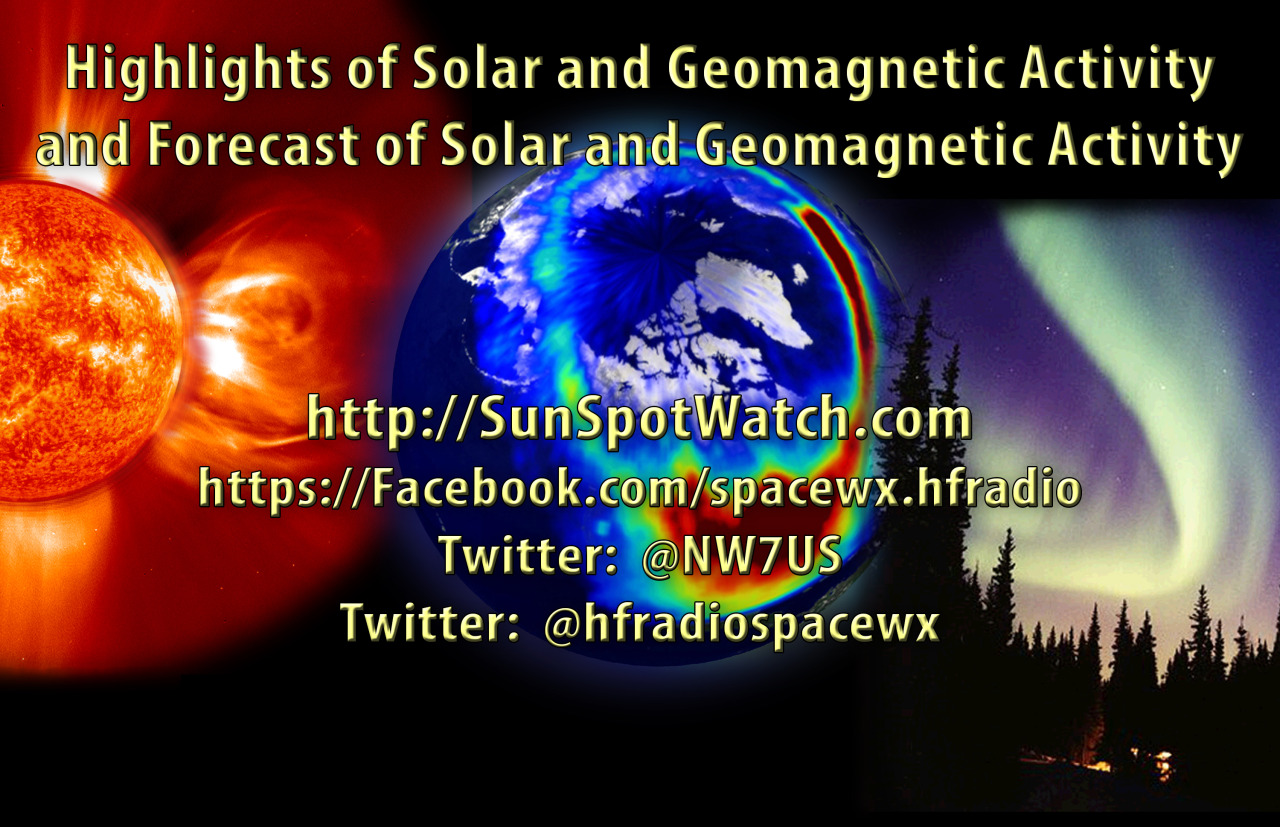 Weekly Propagation Summary – 2016 Feb 15 16:10 UTC
Weekly Propagation Summary – 2016 Feb 15 16:10 UTC
Here is this week’s space weather and geophysical report, issued 2016 Feb 15 0238 UTC.
Highlights of Solar and Geomagnetic Activity 08 – 14 February 2016
Solar activity was low from 08-11 Feb. The largest C-class event during that period was a C8/1f observed at 11/2103 UTC from Region 2497 (N13, L=087, class/area Eac/250 on 12 Feb) with associated Type II (est. speed 483 km/s) and Type IV radio sweeps. A CME was visible following this event and is anticipated to arrive at Earth early on 15 Feb. Solar activity was moderate from 12-14 Feb with Region 2497 producing an M1 flare each day. No other Earth-directed CMEs were observed.
No proton events were observed at geosynchronous orbit.
The greater than 2 MeV electron flux at geosynchronous orbit was at normal to moderate levels during the period.
Geomagnetic field activity began the week at minor storm levels due to effects from a co-rotating interaction region (CIR) ahead of a CH HSS. Predominately quiet to unsettled levels were observed for the remainder of the period with isolated active periods on 09, 11 and 12 Feb associated with extended periods of negative Bz.
Forecast of Solar and Geomagnetic Activity 15 February – 12 March 2016
Solar activity is expected to be at very low to low levels with a chance for M-class flares from 15-17 Feb. Activity is expected to decrease to very low levels with only a chance for C-class flares from 18-29 Feb as Region 2497 moves beyond the west limb. Low levels are anticipated once again on 01-12 Mar as well as a chance for M-class flares with the return of Region 2497.
A slight chance for a proton event exists at geosynchronous orbit from 15-17 Feb due to the flare potential and position of Region 2497.
The greater than 2 MeV electron flux at geosynchronous orbit is expected to be at normal to moderate levels for the majority of the period. High levels are likely on 18-20 Feb following effects from a CME and a subsequent CH HSS.
Geomagnetic field activity is expected to reach minor storm levels on 15 Feb due to effects from the 11 Feb CME. Quiet to active conditions are expected on 16 Feb as CME effects subside. Minor storm conditions are likely again on 17 Feb as a recurrent negative polarity CH HSS becomes geoeffective. Quiet to unsettled conditions are expected with isolated active periods possible on 18-20 Feb as CH HSS effects continue. Mostly quiet conditions are expected on 21-29 Feb. Quiet to unsettled conditions are expected from 01-03 Mar due to effects from a positive polarity CH HSS. Mostly quiet conditions are expected for the remainder of the period with unsettled to active periods possible on 06-07 Mar and 11 Mar as two sequential small recurrent coronal holes affect the field.
Don’t forget to visit our live space weather and radio propagation web site, at: http://SunSpotWatch.com/
Live Aurora mapping is at http://aurora.sunspotwatch.com/
If you are on Twitter, please follow these two users: + https://Twitter.com/NW7US + https://Twitter.com/hfradiospacewx
Get the space weather and radio propagation self-study course, today. Visit http://nw7us.us/swc for the latest sale and for more information!
Check out the stunning view of our Sun in action, as seen during the last five years with the Solar Dynamics Observatory (SDO): https://www.youtube.com/watch?v=zXN-MdoGM9g
We’re on Facebook: http://NW7US.us/swhfr














